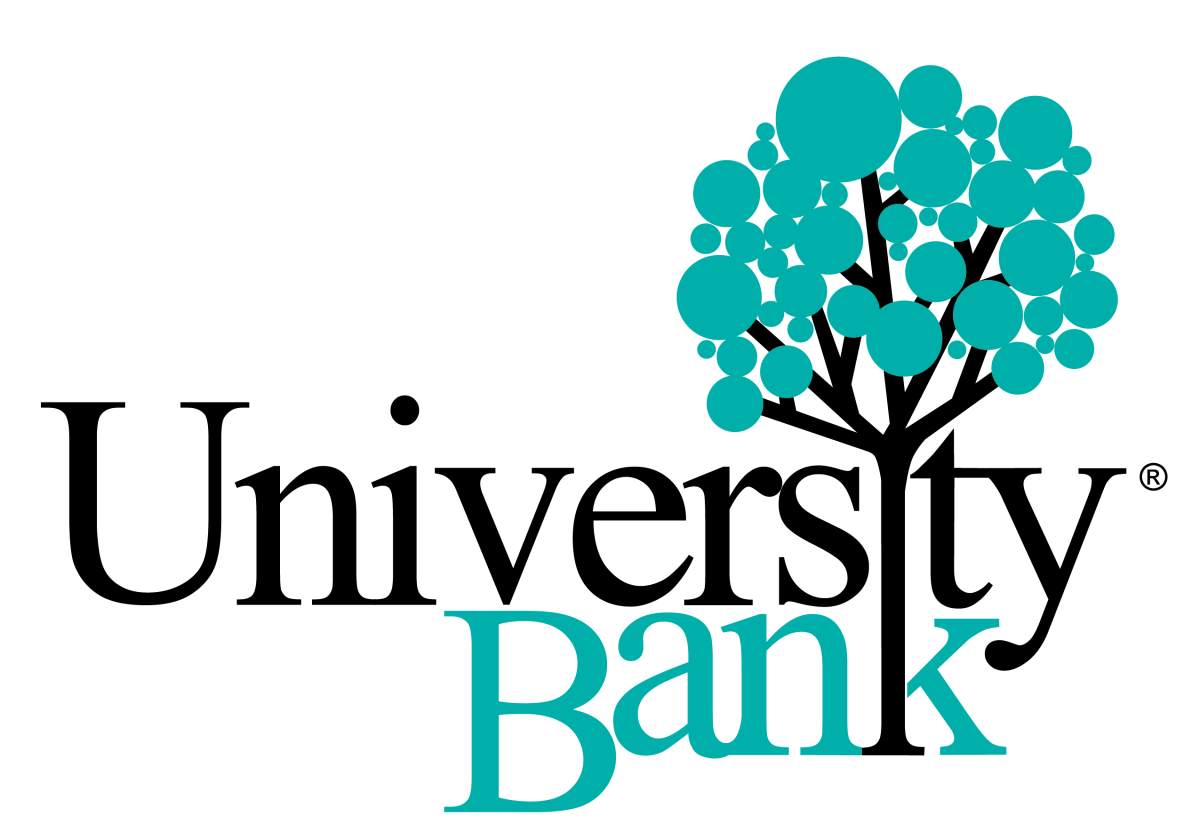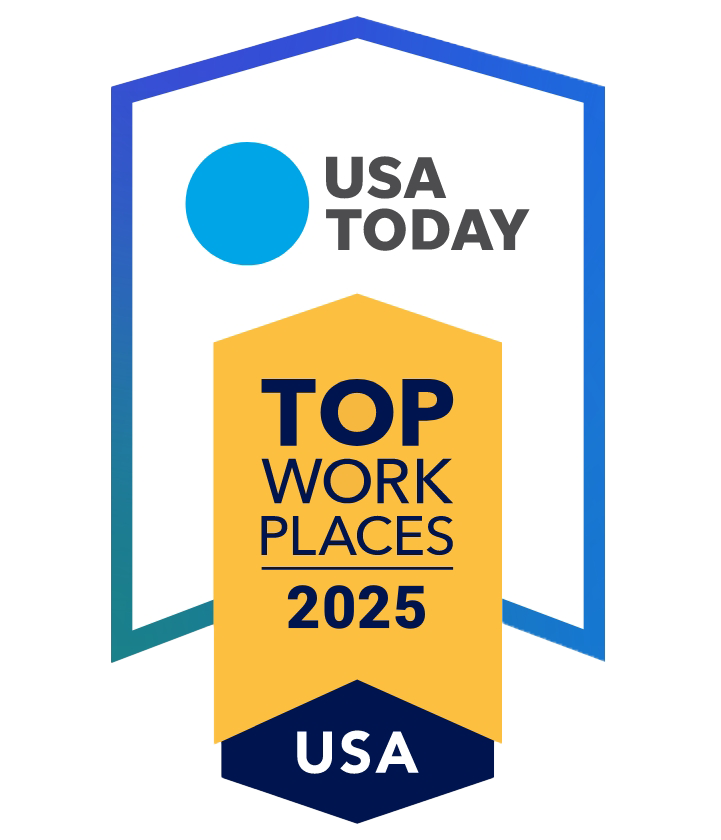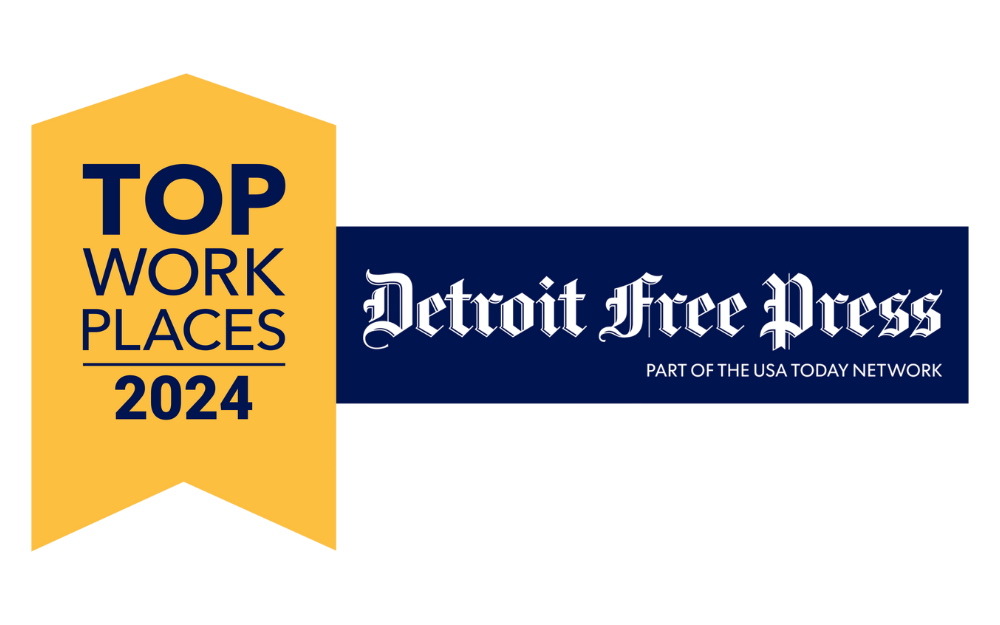Ann Arbor, Michigan, April 12, 2018, — University Bancorp, Inc. (OTCQB: UNIB) announced that it had audited net income attributable to University Bancorp, Inc. common stock shareholders in 2017 of $5,124,358, $0.99 per share on average shares outstanding of 5,187,218 for the year, versus audited net income of $3,806,197, $0.75 per share on average shares outstanding of 5,100,899 for 2016. For 2017, additional net income attributed to non-controlling interest was $269,475. For 2016, net income attributed to non-controlling interest was $202,294.
For 2017, the Company had a return on equity attributable to common stock shareholders of 28.3% on initial equity of $18,075,835. Return on equity in 2016 was 25.7% on initial equity of $14,821,418.
We currently project budgeted annual net income in 2018 of at least $5,300,000 or $1.02 per share.
President Stephen Lange Ranzini noted, “2017 results were excellent. Our return on shareholders’ equity in 2017 was 28.3%, and our five year annual average return on shareholders’ equity was 22.8%.”
Shareholders’ equity attributable to University Bancorp, Inc. common stock shareholders was $23,376,660 or $4.49 per share, based on shares outstanding at December 31, 2017 of 5,200,899, up from $3.54 per share at the end of 2016.
Results in 2017 were restrained by several non-recurring, unusual expenses net of unusual gains, which had an overall negative cumulative impact of $1,648,879, before income taxes:
Unusual expenses:
- With the fall in long-term mortgage interest rates during the first eight months of 2017, the valuation of mortgage servicing rights (MSRs) decreased $828,031;
- The value of the hedged mortgage origination pipeline fell $699,760 as the amount of locked loans at year-end 2017 dropped over the level at year-end 2016;
- Implementation costs related to the adoption of a new mortgage loan origination system in the amount of $392,500 were charged against income;
- Legal fees at UIF of $203,346 were incurred due to the results of the appeal related to the litigation with Guidance Residential;
- A litigation was settled at an early stage for $75,000;
Unusual gains:
- A $549,758 gain (net of all related expenses) on the $1.2 million sale by Ann Arbor Insurance Centre (AAIC) of its former 4,852 ft2 headquarters and related 1.331 acres of land. AAIC relocated in December into a building we purchased two doors down the street which will be used to support the bank’s back office and insurance agency operations. The building, purchased for $2,370,000 or $99 per ft2, is a modern three story office building in Ann Arbor, near the Ann Arbor freeway ring with 24,000 ft2 of office space.
In addition, net income in 2017 benefitted from a change in federal income tax law. On December 22, 2017, the U.S. government enacted the Tax Cuts and Jobs Act (Tax Act), reducing the U.S. corporate income tax rate from a maximum of 35% to a flat 21% rate. Because of a sale of MSRs during 2017, the Company had sufficient taxable income to fully utilize its low-income housing tax credit carry-forwards and alternative minimum tax credit carry-forwards prior to the effective date of the Tax Act, January 1, 2018. This also benefitted the Company since all but $51,966 of the Company’s tax deferred assets were utilized. Because of the reduction in the U.S. corporate income tax rate, we re-measured our ending net deferred tax assets and liabilities at December 31, 2017, which dropped from $5,286,511 to $3,265,510, resulting in an income tax benefit of $2,021,001. As a result the Company recorded an overall income tax benefit for 2017 of $573,453.
Results in 2016 were restrained by several non-recurring, unusual expenses net of unusual gains, which had an overall negative cumulative impact of $579,715, before income taxes:
Unusual expenses:
- With the sharp decline in long-term mortgage interest rates in the first half of 2016 only partially offset in the second half, the valuation of mortgage servicing rights (MSRs) decreased by $513,015;
- Litigation and appeal expense related to a competitor, Guidance Residential, of $405,524. During 2016 University Bank won an initial ruling from the appeals court related to the scope of our appeal and all appeals were filed in the case. We paid the full amount of the judgment and expensed all legal costs.
- Litigation expense related to a lawsuit that was favorably resolved in the first quarter of 2017 in the amount of $198,002.
Unusual gains:
- The value of the hedged mortgage origination pipeline rose $536,826 as the amount of locked loans rose over the level at the prior year-end due to record increased mortgage production levels.
Our 2018 budget forecast includes our estimated results in the 1Q2018 plus our original budget for the final three quarters of 2018, adjusted for all known major changes. The forecast assumes no change in mortgage interest rates from current levels.
In 2017, our residential mortgage origination groups originated $848.8 million of mortgages, mostly sold to the secondary market for our own account, of which $552.3 million were originated by our retail origination group, ULG, $244.2 million were originated by our UIF unit, and the remainder originated by our credit union and community bank origination group. In 2017, 91% of our retail originations and 86% of our UIF originations financed purchase transactions. Purchase transaction originations have risen consistently for the past several years as both ULG and UIF place trained lenders into additional markets nationwide. Mortgage purchase transaction originations have consistently risen as follows:
Year over year mortgage purchase transaction origination increases:
ULG: 2017 vs. 2016: + 9.6% UIF: 2017 vs. 2016: +27.0%
ULG: 2016 vs. 2015: + 8.5% UIF: 2016 vs. 2015: +25.0%
ULG: 2015 vs. 2014: +15.4% UIF: 2015 vs. 2014: +25.1%
ULG: 2014 vs. 2013: +14.5% UIF: 2014 vs. 2013: +19.9%
ULG specializes in FHA and VA lending, deriving about 60% of its volume from these programs, and UIF specializes in faith-based lending.
Originations were very strong for the first nine months of 2017. Originations in 4Q2017 slowed versus the prior year levels, and margins were negatively impacted by the first industry-wide pricing war since the 2007-2009 financial crisis. In 1Q2018 more
normal conditions have begun to reappear: we had mortgage origination closing, submission and application levels that were 1%, 3.4% and 4% ahead of 1Q2017 levels, respectively, and by March 2018, margins rose for most products other than the faith- based financings. The bank has completed the build-out of its new Loan Origination System (LOS) and our Midwest Loan Solutions correspondent channel and UIF Corporation (UIF) divisions have completed a successful rollout. University Lending Group, LLC (ULG) has launched two of its three regions on the new LOS and ULG’s third and final region will roll-out on April 16th, following training, which is occurring this week. One of the bank’s divisions has seen a 13 day decrease in the application to closing cycle following the roll-out of the new LOS, which will have an annual positive impact on the bank’s profitability of about $500,000 if it is sustained. We believe that further efficiencies will be made possible by the new LOS, which represents a $1.7 million total investment by the bank.
The bank’s net income would benefit substantially from any future increases in the Fed Funds interest rate, since our mortgage subservicing business manages over $100 million of off-balance sheet escrow deposit accounts from which we earn all interest income and which are invested in overnight interest earning deposits at the Federal Home Loan Bank of Indianapolis. In addition, the bank’s most recent Asset Liability Management Report indicates that our bank’s own consolidated assets and liabilities are positioned so that we would benefit from increases in short-term interest rates.
Michigan and the Ann Arbor MSA continue to increase employment and as a result, the performance of our portfolio loans and our overall asset quality continues to perform well, and we are experiencing low loan delinquencies. University Bank continues to use an outside vendor to perform Stress Testing analysis and these tests have determined that under a severely adverse (depressionary) national economic scenario worse than the depression we just experienced, assuming a 7.5% drop in GDP, an unemployment rate over 10%, and a 25% decline in housing, and 34% decline in commercial real estate prices from current levels, University Bank would sustain losses of just $1.4 million over two years. This credit risk is moderated by the existing allowance for loan losses of $0.4 million. At $1.0 million, the credit risk under a depressionary economic scenario net of the allowance is just 5% of Tier 1 Capital. We had five loans delinquent 30 days or more at 12/31/2017. The allowance for loan losses stands at $406,437 or 0.71% of the amount of portfolio loans, excluding loans held for sale. Substandard assets fell 47.3% during 4Q2017 to $315,142, 2.0% of Tier 1 Capital at 12/31/2017, and we had no other real estate owned at year-end.
Excluding goodwill & other intangibles related to the acquisition of Midwest Loan Services and Ann Arbor Insurance Center, net tangible shareholders’ equity attributable to University Bancorp, Inc. common stock shareholders was $22,878,065 or $4.40, up from $3.43 per share at 12/31/2016. Please note that we do not see this latter statistic as particularly useful or meaningful, as the value of Midwest Loan Services and
Ann Arbor Insurance Centre are far above book value plus the related goodwill and intangibles.
Net income for the three months ended December 31, 2017 was $2,471,277 or $0.475 on average shares outstanding of 5,200,899 for the period, versus $1,538,746 or $0.302 on average shares outstanding of 5,100,899 for the same 2016 period. During the final quarter of 2017 net income attributed to non-controlling interest was $197,409 versus $229,941 in the final quarter of 2016.
Results in 4Q2017 were restrained by the typical seasonal slowdown as well as several non-recurring, unusual expenses net of unusual gains, which had an overall negative cumulative impact of ($393,392), before income taxes:
Unusual expenses:
- The value of the hedged mortgage origination pipeline fell $838,431 as the amount of locked loans fell over the quarter due to a more than usual seasonal slowdown;
- Implementation costs related to the adoption of a new mortgage Loan Origination System in the amount of $121,250 were charged against income;
- Legal fees at UIF of $203,346 were incurred due to the results of the appeal related to the litigation with Guidance Residential;
Unusual gains:
- A $549,758 gain (net of all related expenses) on the $1.2 million sale by AAIC of of its former 4,852 ft2 headquarters and related 1.331 acres of land;
- An accrual related to stock option expense of $213,667 was reversed, as this expense will be amortized annually over the vesting period of the options;
- With the rise in long-term mortgage interest rates, the valuation of mortgage servicing rights (MSRs) increased $6,210.
Results in 4Q2016 were boosted by a rise in valuation of our mortgage servicing rights portfolio, which was only partially offset by the typical seasonal mortgage origination slowdown as well as several non-recurring, unusual expenses, which had an overall positive cumulative impact of $1,319,289, before income taxes:
Unusual gains:
- With the rise in long term mortgage interest rates, the valuation of mortgage servicing rights (MSRs) increased $2,094,692;
Unusual expenses:
- The value of the hedged mortgage origination pipeline fell $529,878 as the amount of locked loans fell over the quarter due to a typical seasonal slowdown;
- Litigation expense related to the Guidance appeal was $47,523;
- Litigation expense in 4Q2016 related to a lawsuit favorably resolved in 1Q2017 was $198,002.
With the bank’s net income only partially offset by a rise in average assets due to increased mortgage originations, the Tier 1 Leverage Capital Ratio rose to 10.60% at 12/31/2017 on net average assets of $190.0 million from 9.20% at 9/30/2017 on net average assets of $194.7 million, 8.64% at 12/31/2016 on net average assets of $183.3 million and 8.93% at 12/31/2015 on net average assets of $135.4 million.
Basel 3 Common Equity Tier 1 Capital at 12/31/2017 was $19,352,000, at 9/30/2017 was $17,146,000, at 12/31/2016 was $14,215,000, and at 12/31/2015 was $10,584,000.
Basel 3 Total Risk Weighted Assets at 12/31/2017 were $159,683,000, at 9/30/2017 were $153,846,000, at 12/31/2016 were $96,908,000, and at 12/31/2015 were $74,775,000.
The CET1 Risk Weighted Capital Ratio at 12/31/2017 was 12.12%, at 9/30/2017 was 11.14%, at 12/31/2016 was 14.67%, and at 12/31/2015 was 14.15%.
Treasury shares as of 12/31/2017 were zero.
Total Assets as of 12/31/2017 were $245,936,968 versus $263,830,000 at 9/30/2017, $269,775,000 at 6/30/2017, $235,232,000 at 3/31/2017, $190,940,176 at 12/31/2016, $246,524,231 at 9/30/2016, $216,976,000 at 6/30/2016, $194,934,000 at 3/31/2016, and $182,458,912 at 12/31/2015.
Other key statistics as of 12/31/2017:
- 5-year annual average revenue growth*, 7. 3%
- 1-year annual revenue growth*, 7.0%
- 5 Year Average ROE 22.8%
- LLR/NPAs>90 % 250.5%
- Debt to equity ratio, 0%
- Current Ratio,# 9.6x
- Efficiency Ratio, %+ 90.8%
- Loans Held for Sale, $62,313,445
- NPAs >90 days $166,000
- TTM ROA % 2.38%
- TCE/TA % 9.38%
- Total Capital Ratio % 13.72%
- NPAs/Assets % 0.13%
- Texas Ratio % 1.34%
- NIM % 3.27%
- NCOs/Loans % 0.296%
- Trailing 12 Months P-E Ratiox 9.6x
*Using 2017, 2016, 2015, 2014, 2013 and 2012 sales which were $54,493,179, $50,948,149, $43,644,425, $36,598,052, $38,856,573 and $39,991,125, respectively.
#Parent company only current assets divided by 12 month projected cash expenses.
+Calculated as: (non-interest expense/(net interest income + non-interest income))
xBased on last sale of $9.50 per share.
Shareholders and investors are encouraged to refer to the financial information including the audited financial statements, strategic plan and prior press releases, available on our investor relations web page at: www.university-bank.com/bancorp/.
Ann Arbor-based University Bancorp owns 100% of University Bank which, together with its Michigan-based subsidiaries, holds and manages a total of over $20.8 billion in financial assets for over 120,000 customers, and our 401 employees make us the 5th largest bank based in Michigan. University Bank is an FDIC-insured, locally owned and managed community bank, and meets the financial needs of its community through its creative and innovative services. Founded in 1890, University Bank® is the 15th oldest bank headquartered in Michigan. We are proud to have been selected as the “Community Bankers of the Year” by American Banker magazine and as the recipient of the American Bankers Association’s Community Bank Award. University Bank is a Member FDIC. The members of University Bank’s corporate family, ranked by their size of revenues are:
- University Lending Group, a retail residential mortgage originator based in Clinton Township, MI;
- Midwest Loan Services, a residential mortgage subservicer based in Houghton, MI;
- UIF, a faith-based banking firm based in Southfield, MI;
- Community Banking, based in Ann Arbor, MI, which provides traditional community banking services in the Ann Arbor area;
- Midwest Loan Solutions, a residential mortgage correspondent lender based in Southfield, MI;
- Ann Arbor Insurance Centre, an independent insurance agency based in Ann Arbor.
CAUTIONARY STATEMENT: This press release contains certain forward-looking statements that involve risks and uncertainties. Forward-looking statements include, but are not limited to, statements concerning future growth in assets, pre-tax income and net income, budgeted income levels, the sustainability of past results, and other expectations and/or goals. Such statements are subject to certain risks and uncertainties which could cause actual results to differ materially from those expressed or implied by such forward-looking statements, including, but not limited to, economic, competitive, governmental and technological factors affecting our operations, markets, products, services, interest rates and fees for services. Readers are cautioned not to place undue reliance on these forward-looking statements, which speak only as of the date of this press release. ###





